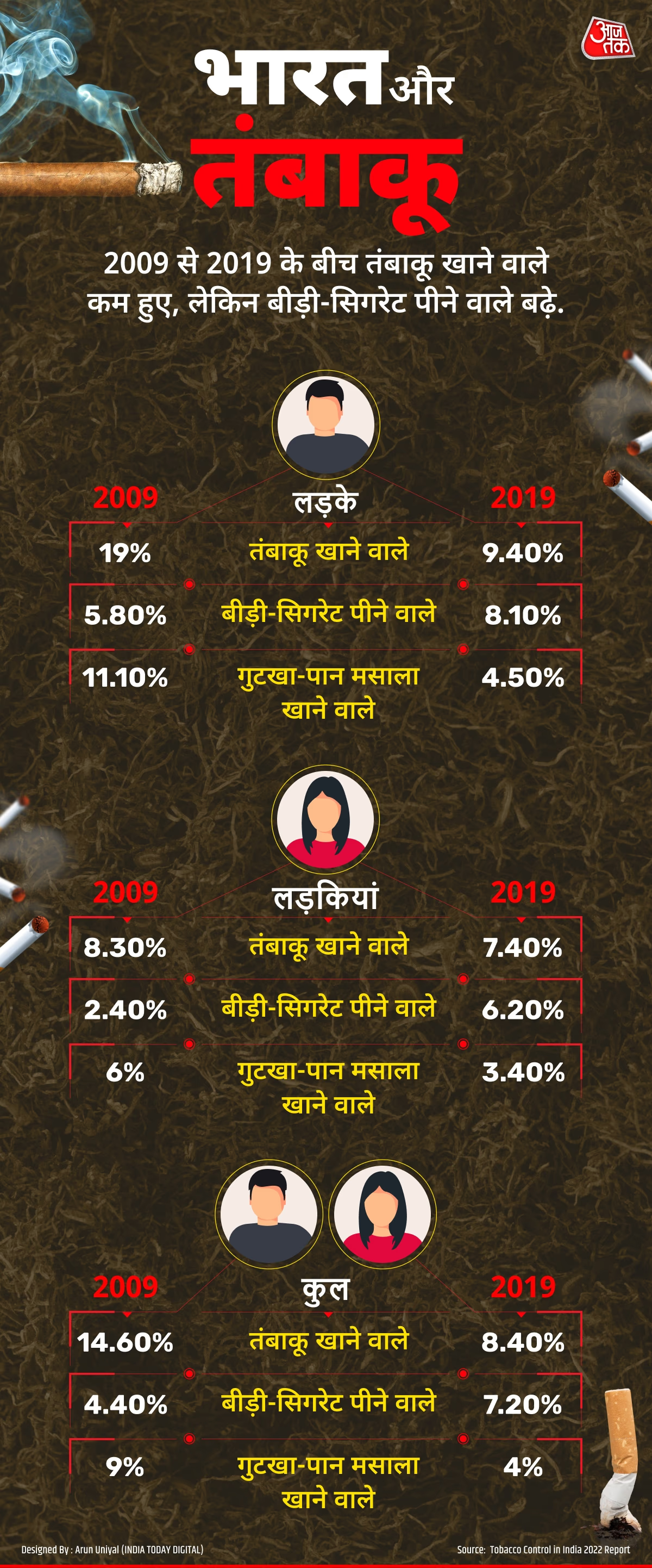'Smoking is injurious to health...' This statutory warning on cigarette packets is hard to miss, yet youth addiction to smoking continues to surge. According to recent reports from the Ministry of Health, both young boys and girls have shown an increase in smoking habits over the past decade in India.
The report titled 'Tobacco Control in India 2022' reflects that while overall tobacco consumption has declined nationwide, the consumption of cigarettes and bidis has surprisingly risen. Alarmingly, the addiction to smoking is quickly increasing among young girls.
The data reveals that from 2009 to 2019, a span of 10 years, smoking among girls has doubled. Though the number of boys smoking also went up, the hike was not as significant.
Insights into the Smoking Trend
As per the Ministry's latest findings, 2.4% of girls were smoking in 2009. By 2019, that figure leapt to 6.2%, meaning a 3.8% increase over the ten years. Similarly, in 2009, 5.8% of boys smoked. In 2019, it rose to 8.1%, marking a 2.3% increase within the same period. Comparatively, the rate of smoking among boys over the decade has not accelerated as much as it has among girls.

Source: aajtak
A Further Cause for Concern
An additional concerning insight from the report is the rapid pace at which the new generation, especially girls, are becoming hooked on smoking.
Statistics show that in 2017, 1.5% of adult women smoked. By 2019, 6.2% of girls reported smoking. This trend suggests future generations may be at greater risk for smoking addiction.
Despite potential legal repercussions, shopkeepers still sell cigarettes and bidis to underage individuals. About 45% of adolescent smokers acknowledged that sellers don't refuse them tobacco products because of their age.
The Health Risks of Smoking
Consuming tobacco products like paan masala, gutkha, or smoking cigarettes and bidis poses severe health hazards. These can increase risks of cancer, respiratory diseases, heart conditions, and strokes.
According to the World Health Organization (WHO), about 270 million people use tobacco products in India, leading to over 1.35 million deaths annually.
The Ministry's report highlights that smokers are at a 31% to 55% higher risk of premature death compared to non-smokers.
Tobacco can also negatively impact the reproductive organs of both men and women. Pregnant mothers who smoke face higher risks of premature delivery, and in some cases, smoking can lead to fatalities during childbirth.
What Can Be Done to Reduce Smoking?
Raising awareness is the most effective strategy to deter young individuals from tobacco and smoking. Post-2012 TV campaigns emphasizing the harms of smoking and tobacco have slightly decreased usage rates.
The Ministry's 'Global Youth Tobacco Survey' conducted in 2019 found that smoking in India's population decreased from 8.1% in 2009 to 7.1% in 2019. Likewise, the number of people using tobacco products has also dropped from 15% in 2009 to 9% in 2019.
Another measure to reduce consumption is to increase taxes on tobacco products. WHO reports suggest that even a minimal 10% tax increase on tobacco can reduce consumption by 4% in high-income countries and by 5% in lower to middle-income countries.




